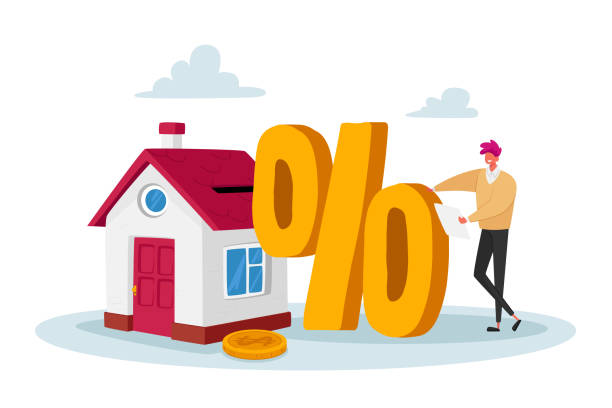Real estate and mortgage applications are always changing thanks to new technologies. One area of discussion is how Augmented Reality allows its integration into the most ordinary mortgage applications. Augmented Reality combines digital information with one’s physical world. It may be revolutionary for home inspection and appraisals. Here’s a closer look at how this technology is revolutionizing the mortgage landscape.
Table of Contents
ToggleWhat is Augmented Reality?
Augmented reality enhances the way we see the real world through digital information. It’s pretty much opposite of Virtual Reality, which tries to immerse a user in an entirely virtual space. AR adds layers of digital content to the real world. For example, AR can overlay 3D models, show property information, or point to potential problems directly onto a live video feed from a smartphone or tablet. Indeed, this technology has already gained waves in other industries, and its application is most forthright in real estate and mortgage processes, innovative and transformative.
Virtual Home Inspections: A New Way to Explore Properties
Traditionally, on-site home inspection has always constituted one of the major parts of the mortgage application process whereby inspectors travel to inspect the home and report on the condition. This is going to change dramatically with the advent of AR technology by allowing the carrying out of virtual home inspections that provide detailed, interactive views of properties.
More Transparency – AR can layer the 3D image of the house over a real-time video feed. This will make it feasible for a homebuyer and a home appraiser to see the house from different angles and perspectives, without having to be in the same location. Virtual tours can highlight specific areas or issues directly on the overlay so that the damage or needed renovation in certain parts is highlighted.
Detailed Property Insights – AR tools can integrate with property databases to display key information such as historical data, maintenance records, and recent upgrades. This real-time data enhances the inspection process by providing comprehensive details at the touch of a button.
Interactivity – AR can give the homebuyer the chance to see how they might individualize or customize a space. This could be seeing a space with alternative paint colors, alternative furnishings and configurations, and more. It gives the buyer much more insight into his intended investment and a closer feel for the real estate.
Changing the Real Estate Appraisal Process Through AR
Appraisals are another critical step in the mortgage process-they determine a property’s value, based on condition and other market factors. AR is prepared to make this an easier, streamlined process in several ways:
Accurate Appraisals – AR can provide appraisers with accurate measurements of a property and real-time data overlays that may help in the analysis of property conditions and features. Structural details or potential problem areas that have been identified with the help of this technology may come to the fore for determining the potential value lost in a property.
Efficiency and Accessibility – The use of virtual appraisals through AR reduces the need for physical visits and, therefore, leads to efficiency for appraisers and clients in terms of saving time and traveling logistics costs. This access is also better for individuals whose locations make it difficult to have appraisals or who are busy with other appointments during appraisal times.
Risk Mitigation – AR provides a clear and interactive picture of the property so as to trace possible risks or problems that would jeopardize the value of the said property. Risk detection in advance helps to avoid poor risk management, therefore making the buyer as well as the lender feel confident about their decision before sealing the final deal.
Advantages of AR in Mortgages
Richer, More Interactive Experience – AR provides a more vibrant, interactive experience for both the buyer and the lender. Through visualization of properties and potential, better decisions can be made; better outcomes ensue, and satisfaction also goes up.
Efficient Processes – The incorporation of AR technology makes inspection and appraisal processes more streamlined and thus minimizes the need for multiple on-site visits to speed up the mortgage application process. The process reduces the burden of all players involved, as it accelerates transactions and reduces administrative tasks.
Better transparency – Regarding transparency, AR enhances openness about a property’s condition and value because it gives actual time detailed information regarding the same. It improves mutual trust among buyers, sellers, and lenders and eliminates the possible dispute or misunderstanding by all parties in question.
Challenges and Considerations
Technological Barriers – The technology is still in the development stage, and although AR offers many benefits, there can be a problem of interoperability with legacy systems, and if not accurate, it can compromise the projection quality. High investment in advanced AR tools and upgrades is required at par with the rate of technological advancement.
Privacy and Security – Transactions of sensitive property data using AR raise flags on privacy and security measures. Data protection is therefore paramount to the safeguarding of personal and financial information.
User Adaptation – Most buyers, sellers, or appraisers may not be aware of AR technology. A proper trainee and support program for employees to adapt to these new technologies has to be in place for full utilization.
Conclusion
This is the integration of Augmented Reality in mortgage applications, which represents a giant stride in how we approach home inspections and appraisal procedures. Virtual home inspections, detailed insight into properties, and smoother appraisal processes are offered with the use of AR technology, enhancing decision-making, improving efficiency, and giving a better and clearer view of properties. While there are changes, such as the barrier created by access and privacy issues to overcome, the extent of the change that AR would bring to the mortgage business is remarkable. This AR could eventually become part of the mortgage process if technology continues to evolve. It will then make the mortgage process more dynamic, accessible, and user-friendly.

